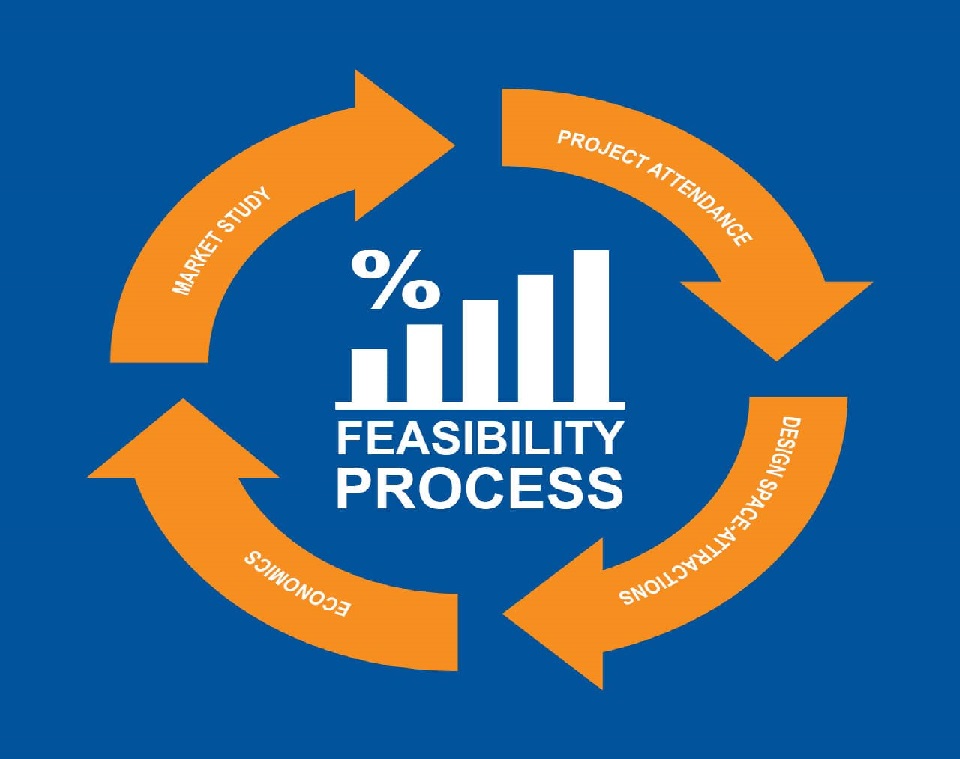Today we are going to explain what a feasibility study is and why is it important for companies. Every well-managed project starts with a feasibility study and a detailed requirements analysis. Did you know that many projects fail precisely because of mistakes made in the introductory phase? It often happens that a very good project that can offer investors an excellent return is simply not noticed and is not implemented. For a project to be successful, it is necessary to carry out a feasibility study in order to avoid possible losses of time and money.
A well-conducted feasibility study can also help uncover new ideas that change the scope of the project to meet current market requirements. The end result is a clear objective and scope of the given project. It cannot be forgotten that ineffective business planning is the culprit of a project start-up turning into a failure. With proven feasibility, investment in a project will generate short, medium, and long-term benefits.
What is project feasibility?

A feasibility study is a detailed analysis of a planned project. It includes financial, economic, technical, legal, and institutional analysis aimed at examining the legitimacy of the project. Its essence is a critical analysis of all operational details for project implementation. The preparation of a feasibility study is mandatory when applying for funds. Each part of the feasibility study must be carried out with due care and include all required points.
The main objective of a project feasibility study is to provide all the information necessary to verify whether the project has the right basis for implementation. And, furthermore, whether it meets the needs of the intended beneficiaries. The study should provide all the necessary data to make an investment decision, both to the investor and to the financial institution, which evaluates the investment based on it. Keep in mind when creating a feasibility study the reliability and credibility of the information presented.
How to make a project viable?
Every project has established outcomes that must be met for it to be viable. Determining the feasibility of a project requires the evaluation of a number of different factors and the potential for feasibility will vary depending on the type of project. One such factor is costs. For a project to be considered viable, its costs cannot exceed its revenues. For example, if a budgeted amount is available for a project, and the actual costs exceed the budget, the project is likely to lose its viability. Here is a template for strategic plan to ease your job.

Another factor that must be taken into account for a project to be viable is time. A project that is not on schedule may lose its viability. Therefore, it is important to meet the deadlines established to present the necessary data and studies that show its viability.
It is also important for a project to be viable that the project itself can satisfy the needs of the target public and that the products or services are of high quality. A viable project must necessarily offer real satisfaction. Not only to the investors who will see the amount of their investment multiplied but also to the clients who are looking for a solution or an answer to their needs and concerns.
What are the phases of a feasibility study?
The feasibility study of a project consists of several stages that may differ from one project to another, however, some are basic and common to all. The first step is an analysis of the proposed objectives, the goals to be achieved, and an internal diagnosis of the company. It is important to know the current status of the planned project, to analyze the problems, and how to solve them. In this phase, the opinions of all the participants involved in the project must be taken into account.
Analysis of the socioeconomic environment
In order to carry out a good socioeconomic analysis, we must take into account several aspects, among which are the location where the project will be developed and the socioeconomic conditions of the sector to which it is directed. The first will justify the choice of a particular location. The second is the impact of the project’s effects on increasing the company’s competitiveness. And also, on the development of cooperation between the target field and the economy.
Demand analysis
This includes an analysis of the demand for the project results for practical applications. And, in what way these results will contribute to increasing the competitiveness of the company. It is necessary to describe the market in which the application will be made, its potential, and the number of interested people. Its main objective is to present the demand of a defined market and to determine its structure and size. It also serves to identify the recipients of the project’s results.

Technical and legal analysis of project feasibility
It should contain, first of all, a description of the technical resources such as machines, land, devices, and buildings. As well as all the own research equipment, which will be used during the execution of the project. Secondly, the legal status of the applicant and other project participants, information on the organizational and legal feasibility of the project. In turn, information on the need to obtain permits and restrictions arising from property rights should be included.
Comprehensive project implementation plan
It should include a description of the individual implementation tasks:
- The material and financial schedule of the project; with the structure and planned expenditures for the individual tasks.
- The project schedule, the stages of implementation divided into quarters, together with the execution time of each stage.

- The execution of each task and taking into account the so-called “milestones”.
- The durability of the project results.
- The promotion of the project, the objective, the target groups, the means, and methods.
Financial analysis and project feasibility conclusions
Here the assumed budget is justified. It should reflect the applicant’s financial situation. In addition, include the cash flow (using the standard or composite method) that will cover the total duration of the project. This phase should also present the conclusions of the financial analysis. Additionally, it must prove that the funds will be sufficient to cover all costs. If the conclusions do not show positive results, the reasons must be determined and the project assumptions must be changed as necessary.
Why is it important for companies?
The importance of a feasibility study is based on the organizational willingness to “get it right” before committing resources, time, or budget. A feasibility study can uncover new ideas that can completely change the scope of a project; therefore, it is better to make these arrangements in advance rather than jumping in and discovering that the design simply won’t work. Conducting a feasibility study is always beneficial to a project, as it provides a clear picture of the proposed project before it is executed.

Feasibility studies can also help to determine the problems, benefits, and potential costs that may affect the project, while also contributing to the development of marketing strategies that will convince investors that investing in the business is the best option. Thanks to this, it is possible to define execution variants and affirm whether the assumed project is feasible. In other words, a good feasibility study is essential for the success of any project.





